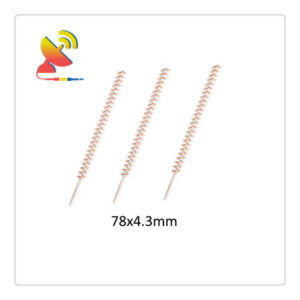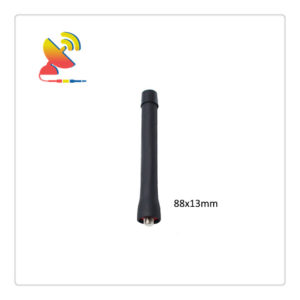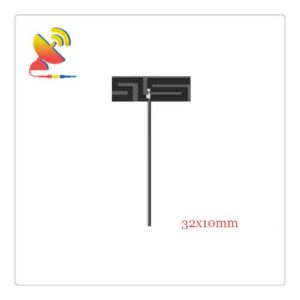Description
What is the Yagi Directional Antenna 2.4G Wifi Antenna?
The antenna is commonly made of aluminum or steel. Yagi has a moderate to high gain on a narrow beamwidth of HF, VHF, and UHF frequency bands of 400 MHz to 5.8 GHz. Gain is relative to the number and arrangement of the parasitic components on the antenna.
Yagi antennas terminate with coaxial mostly via SMA, RP SMA, and N-type connectors. Mounting is done outdoors either parallel or perpendicular to the ground at a stipulated height. There are indoor versions of the enclosed Yagi antennas.
The CTRF-ANTENNA-YG-2450-50-SMA Yagi Directional Antenna 2.4G Wifi Antenna offers 20dBi high-gain and 50 ohms, short RG 58 low loss coax cable SMA standard connector.
C&T RF Antennas Inc provides internal & external antennas with antenna radio frequencies such as NFC, 169MHz, 230MHz, 315MHz, 433MHz, 868MHz, 915MHz, VHF&UHF, Lora, NB-IoT, ADS-B, GSM, GNSS, GPRS, 1.2 GHz, 1.4 GHz, 1.8 GHz, Wi-Fi 2.4 GHz, 5.8 GHz, Cellular 2G, 3G, 3.5 GHz, 4G LTE, GPS, 5G NR, 6G, etc.
C&T RF Antennas Inc. provides RF antennae with Omni & Directional antenna types such as Dipole Antennas, Whip Antennas, Marine Antennas, Router Antennas, MIMO Antennas, Combo Antennas, PCB Antennas, FPC Antennas, Spring Antennas, Magnetic Antennas, Sector Antennas, Yagi Antennas, and Accessories, etc, for IoT & M2M industries.
Contact us for the Yagi Directional Antenna 2.4G Wifi Antenna for more details such as Yagi Directional Antenna 2.4G Wifi Antenna datasheet, Yagi Directional Antenna 2.4G Wifi Antenna pricing, Yagi Directional Antenna 2.4G Wifi Antenna inventory, or other Yagi Directional Antenna 2.4G Wifi Antenna styles.
Yagi Directional Antenna 2.4G Wifi Antenna Specifications:
Yagi Directional Antenna 2.4G Wifi Antenna Electrical Specifications |
|
| RF Antenna Type | Yagi Antenna |
| Model | CTRF-ANTENNA-YG-2450-50-SMA |
| Frequency | 2400-2500MHz |
| Gain | 20dBi |
| VSWR | ≤2.0 |
| Impedance | 50 Ω |
| Polarization | Linear |
| Cable Type | RG58 |
| Connector | RP SMA |
| Cable Length | 15cm |
| Max Power | 50W |
| Lightning Protection | DC-Ground |
Yagi Directional Antenna 2.4G Wifi Antenna Mechanical Specifications |
|
| Dimension | 49.5×6.8×1.6cm |
| Weight | Approx. 270g |
| Material | Aluminum |
| Operation Temperature | -40˚C~+85˚C |
| Storage Temperature | -40˚C~+80˚C |
| Units | 14 |
| Mounting | U Clamp/Adsorption |
| Safety Emission and other | RoHS Compliant |
| Standard | IEEE802.11b,IEEE802.11g,IEEE802.11n |
What are the advantages of the Yagi antenna?
The Yagi antenna is really easy to use. It has good directivity and higher gain than dipole antennas. It is particularly effective for direction finding and long-distance communication.
If equipped with an elevation and azimuth rotation control device, you can even communicate with radio stations in all directions, including spacecraft, at will. This feeling is not available from a vertical antenna.
Composition structure
A typical Yagi antenna should have three pairs of dipoles. The active vibrator, or main vibrator, which is connected to the feeder, is among the three pairs of vibrators, with one horizontal in the middle. The reflector that is slightly longer than the active vibrator is called the reflector.
It is on the side of the active vibrator and plays a role in weakening the radio waves transmitted from this direction or the radio waves emitted from the antenna; it is slightly shorter than the active vibrator.
The director, which is located on the other side of the active vibrator, can enhance the electric wave transmitted from this site or emitted in this direction. There can be many directors, each of which is slightly shorter than the adjacent one and close to the active oscillator.
The more directors, the sharper the direction and the higher the gain, but in fact, after more than four or five directors, the increase in this benefit is not obvious, and the volume is larger, the weight is increased, and the material strength requirements are increased.
Problems such as increased costs have gradually become prominent. Under normal circumstances, a five-unit Yagi (that is, three directors, one reflector, and one active vibrator) is enough.
Each director and reflector is made of a metal rod. No matter how many units there are, all the vibrators are fixed in parallel on a column at a certain interval. The pillars are also made of metal materials.
Should the midpoint of these vibrators be insulated from the pillars? No. It turns out that when radio waves walk on these vibrators with a length of about half a wavelength, the midpoint of the vibrator is exactly at the zero points of the induced signal voltage, and the zero points are connected to the ground, which is no problem at all.
And there is another advantage. The static electricity induced in the space can pass through these contact points and the metal pole of the antenna to the lightning protection net of the building.






Reviews
There are no reviews yet.